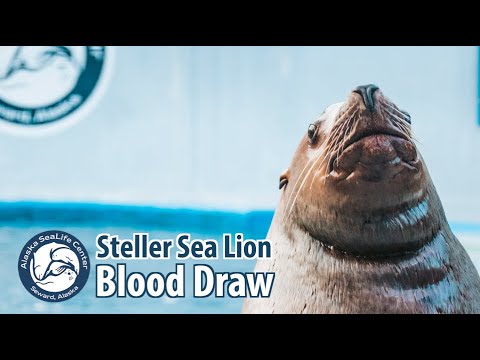– Insights into the process and significance of voluntary blood draws in marine mammals, focusing on Forrest, the Steller sea lion and the Alaska SeaLife Center (ASLC) team.
– The role of trust and training in managing and caring for zoo and aquarium animals.
– The contribution of these practices to wildlife conservation and scientific research.
– The importance of public education and engagement in environmental and conservation efforts.
Understanding the process and significance of voluntary blood draws in wildlife management requires a deep dive into the practical and ethical considerations that govern interactions between humans and animals in controlled environments. In the Forrest the Steller sea lion and the Alaska SeaLife Center team, voluntary blood draws exemplify the harmonious convergence of animal care, conservation, and scientific research. While seemingly simple, this procedure is underpinned by complex preparatory work and has far-reaching implications for global wildlife management and conservation efforts.
Voluntary blood draws are pivotal in maintaining the health of animals in captivity, providing vital data that inform veterinarians and caretakers about the physiological state of an animal. Unlike forced restraint, which can induce stress and compromise the reliability of diagnostic results, voluntary participation leverages the animal’s trust and willingness, ensuring that the process is as minimally invasive as possible. For Forrest the Steller sea lion, this entails a series of well-coordinated actions by the ASLC team, trained to execute these procedures with precision and sensitivity.
The foundation of such a successful voluntary blood draw lies in meticulous training and relationship-building between the animal and its caretakers. This is a gradual process, hinging on positive reinforcement techniques that reward desired behaviors, fostering mutual trust. For marine mammals like Forrest, this can involve acclimating them to human presence and touch and gradually introducing them to medical equipment. The goal is to create a stress-free environment where the sea lion feels comfortable and secure, showcasing the importance of animal psychology in zoo and aquarium management.
These practices serve a dual purpose; aside from ensuring the health and well-being of the animals, they also play a critical role in broader conservation and research efforts. Blood samples can provide essential information on genetics, health indicators such as hormone levels, and the presence of contaminants or pathogens. By analyzing these samples, scientists can gain insights into the health trends of the individuals in captivity and their wild counterparts. Consequently, this information can inform conservation strategies, support breeding programs aimed at genetic diversity, and enhance our understanding of the impacts of environmental changes on marine ecosystems.
Furthermore, the processes surrounding voluntary blood draws at institutions like the Alaska SeaLife Center also serve as powerful tools for public education and engagement. Through demonstrations, educational programs, and behind-the-scenes experiences, visitors gain a firsthand look at the science of animal care and conservation. These experiences demystify the work of zoos and aquariums, highlighting their role in conservation and research. They also underscore the connection between individual animal welfare and broader environmental stewardship, fostering a deeper appreciation for marine biodiversity and the importance of protecting these ecosystems.
The collaboration between Forrest the Steller sea lion and the ASLC team in voluntary blood draws exemplifies the intersection of animal care, conservation, and education. This approach ensures the animals’ physical and psychological well-being and advances our understanding of marine ecosystems and the challenges they face. In doing so, it reinforces the vital role of trust, training, and ethical consideration in managing zoo and aquarium animals, contributing to the global efforts to conserve our planet’s precious wildlife. By engaging the public in these endeavors, institutions like the Alaska SeaLife Center play an integral role in shaping the future of environmental conservation, underscoring the importance of informed, compassionate stewardship of the natural world.
*****
Source Description
We gave our veterinary team a GoPro to document a voluntary blood draw with Forrest, our male Steller sea lion!
In this video, you’ll see firsthand what it’s like to be on the ASLC vet team, including mentoring some of our incredible interns.
This “Virtual Visit” episode is made possible by the generous support of our sponsors. Thank you, Royal Caribbean Group, for making this free program possible!


